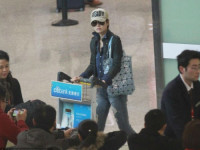【Cocos2d入门教程三】HelloWorld之一目了然
来源:互联网 发布:上海的美食知乎 编辑:程序博客网 时间:2024/05/17 02:24
什么程序都是从HelloWorld先开始。同样Cocos2d-x我们先从HelloWorld进行下手、下面是HelloWorld的运行完成图:
建立好的Cocos游戏项目中会有两个比较常用接触的文件夹。分别为Classes与resource。Classes存取代码文件,resource存取资源文件,下面为完整的项目架构:
我们先来看下最基本的AppDelegate.cpp类
#include "AppDelegate.h"#include "HelloWorldScene.h" //命名空间USING_NS_CC; //构造函数AppDelegate::AppDelegate() { } //析构函数AppDelegate::~AppDelegate() {} //程序启动完成后会进入的函数 bool AppDelegate::applicationDidFinishLaunching() { //初始化导演 auto director = Director::getInstance(); //获得OpenGL视图 auto glview = director->getOpenGLView(); //如果没有获取OpenGL视图 if(!glview) { //创建OpenGL视图 glview = GLView::create("My Game"); //设置OpenGL视图 director->setOpenGLView(glview); } //设置是否显示调试信息 director->setDisplayStats(true); //设置帧率 director->setAnimationInterval(1.0 / 60); //调用场景 auto scene = HelloWorld::createScene(); //执行场景 director->runWithScene(scene); return true;} //当程序进入后台后调用的函数(当在玩游戏时忽然别人打来电话时,程序进入后台) void AppDelegate::applicationDidEnterBackground() { //停止播放动画 Director::getInstance()->stopAnimation(); //暂停播放背景音乐 //SimpleAudioEngine::getInstance()->pauseBackgroundMusic();} //当程序重新被激活的时候调用的函数(声音重新响起) void AppDelegate::applicationWillEnterForeground() { //播放动画 Director::getInstance()->startAnimation(); //继续播放背景音乐 //SimpleAudioEngine::getInstance()->resumeBackgroundMusic();}HelloWorld.h文件
#ifndef __HELLOWORLD_SCENE_H__#define __HELLOWORLD_SCENE_H__ #include "cocos2d.h" //HelloWorld类继承自Layer类class HelloWorld : public cocos2d::Layer{public: //创建场景 static cocos2d::Scene* createScene(); //初始化层 virtual bool init(); //菜单响应函数 void menuCloseCallback(cocos2d::Ref* pSender); //用于创建:场景、菜单、层等东西 CREATE_FUNC(HelloWorld);}; #endif HelloWorldScene.cpp中的代码中的Scene* HelloWorld::scene(),实现了创建场景的过程::
1、创建场景
2、创建层
3、将层加到场景上
4、返回场景
HelloWorld.cpp
#include "HelloWorldScene.h" //命名空间USING_NS_CC; //创建场景Scene* HelloWorld::createScene(){ //创建场景 auto scene = Scene::create(); //创建层 auto layer = HelloWorld::create(); //将层添加到场景中 scene->addChild(layer); //返回场景 return scene;} //初始化层bool HelloWorld::init(){ //初始化父类的Layer if(!Layer::init()) { return false; } //获得窗口的大小 Size visibleSize = Director::getInstance()->getVisibleSize(); //获得坐标原点的坐标 Vec2 origin = Director::getInstance()->getVisibleOrigin(); //用图片创建菜单项 //第一个参数:正常状态下的图片 //第二个参数:被选中时的图片 //第三个参数:响应函数 auto closeItem = MenuItemImage::create( "CloseNormal.png", "CloseSelected.png", CC_CALLBACK_1(HelloWorld::menuCloseCallback, this)); //设置菜单项的位置 closeItem->setPosition(Vec2(origin.x + visibleSize.width - closeItem->getContentSize().width/2 , origin.y + closeItem->getContentSize().height/2)); //创建菜单 auto menu = Menu::create(closeItem, NULL); //设置菜单的坐标原点为左下角(菜单中默认的坐标原点在窗口的中央) menu->setPosition(Vec2::ZERO); //将菜单项添加到菜单中 this->addChild(menu, 1); //创建一个标签 //第一个参数:标签中的内容 //第二个参数:字体 //第三个参数:字体大小 auto label = LabelTTF::create("Hello World", "Arial", 24); //设置标签的位置 label->setPosition(Vec2(origin.x + visibleSize.width/2, origin.y + visibleSize.height - label->getContentSize().height)); //设置标签的位置 this->addChild(label, 1); //创建一个精灵 auto sprite = Sprite::create("HelloWorld.png"); //设置精灵的位置 sprite->setPosition(Vec2(visibleSize.width/2 + origin.x, visibleSize.height/2 + origin.y)); //将精灵添加到层中 this->addChild(sprite, 0); return true;} //菜单响应函数void HelloWorld::menuCloseCallback(Ref* pSender){#if (CC_TARGET_PLATFORM == CC_PLATFORM_WP8) || (CC_TARGET_PLATFORM == CC_PLATFORM_WINRT) MessageBox("You pressed the close button. Windows Store Apps do not implement a close button.","Alert"); return;#endif //结束场景 Director::getInstance()->end(); #if (CC_TARGET_PLATFORM == CC_PLATFORM_IOS) exit(0);#endif}HelloWorldScene.cpp中的 HelloWorld::init(),实现了初始化:
1、初始化父类的Layer
2、得到窗口的大小
3、得到窗口的坐标
4、创建菜单项
5、设置菜单项的位置
6、设置菜单的位置
7、将菜单加到层中
8、创建标签
9、设置标签的位置
10、将标签加到层上
11、创建精灵
12、设置精灵的位置
13、将精灵加到层上
#include "main.h"#include "AppDelegate.h"#include "cocos2d.h" //命名空间USING_NS_CC; //Cocos2d-X的主函数(相当于C/C++中的main函数) int APIENTRY _tWinMain(HINSTANCE hInstance, HINSTANCE hPrevInstance, LPTSTR lpCmdLine, int nCmdShow){ //表示lpCmdLine、nCmdShow是两个没用的参数 UNREFERENCED_PARAMETER(hPrevInstance); UNREFERENCED_PARAMETER(lpCmdLine); //定义一个app对象 AppDelegate app; //执行app对象的run函数。进入帧循环 return Application::getInstance()->run();}main.cpp中的代码只是实现了下面的操作
定义一个App对象->执行App对象进入帧循环
一个游戏程序就这样执行起来,应运而生,是不是感觉特别的神奇。ok关于helloworld的解析就分享至此。下一章进入菜单篇的学习
1 0
- 【Cocos2d入门教程三】HelloWorld之一目了然
- DWR入门教程之HelloWorld
- DWR入门教程之HelloWorld
- DWR入门教程之HelloWorld
- jni入门教程之HelloWorld
- cocos2d-x之helloworld
- Cocos2d-x之helloworld
- Cocos2d-x之helloworld
- Cocos2d-x之HelloWorld
- Cocos2d-x 之 HelloWorld
- JNI入门教程之HelloWorld篇
- JNI入门教程之HelloWorld篇
- JNI入门教程之HelloWorld篇
- JNI入门教程之HelloWorld篇
- JNI入门教程之HelloWorld篇
- JNI入门教程之HelloWorld篇
- JNI入门教程之HelloWorld篇
- JNI入门教程之HelloWorld篇
- Java4Android-包和访问权限2
- HDU 4323
- 由二叉树前序和中序遍历生成二叉树
- hdoj.1295 Move Move Look【水题】 2015/08/06
- sql触发器(insert,update,delete)
- 【Cocos2d入门教程三】HelloWorld之一目了然
- iOS开发课程免费得
- MySQL基础语句
- HTML <a> 标签 (修改样式,链接邮箱Email地址)
- 矩形覆盖
- 16. Element contentEditable 属性
- C++Primer 第五版 练习9.43 解答
- HDU 3342
- Linux编程系统时间的获取




